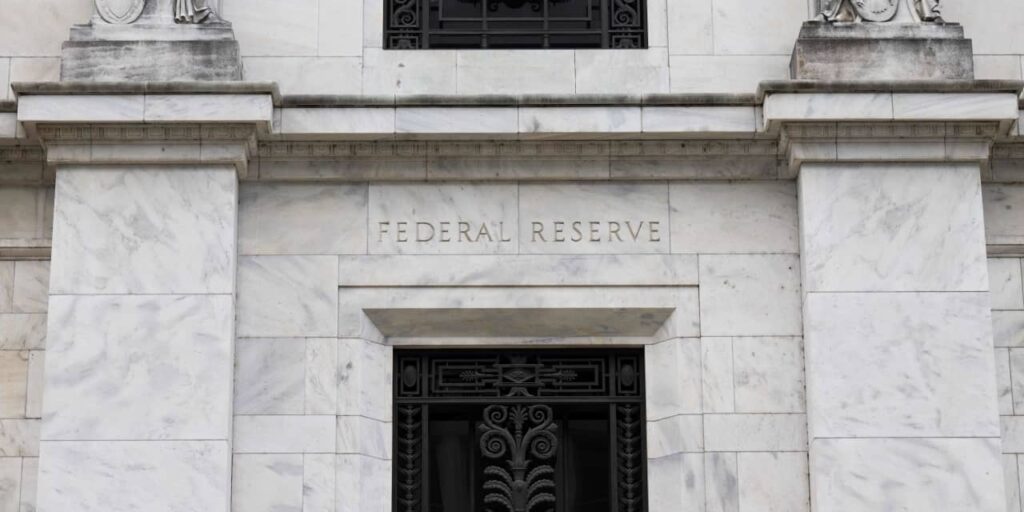The Federal Reserve’s preferred measure of inflation fell again in October, the latest sign that price increases are slowing down significantly. It could encourage bets that the central bank will cut interest rates multiple times next year, a narrative that has spurred a recent stock market rally.
The core personal-consumption expenditures price index, also known as the core PCE deflator, rose 3.5% year over year in October, down from 3.7% in September and in line with expectations. The core PCE deflator rose 0.2% month over month, down from 0.3% in September and in line with estimates among economists surveyed by FactSet.
Headline PCE, which includes food and energy prices that the core deflator strips out, rose 3% yearly in October, below forecasts of 3.1%. Headline PCE rose just 0.05% month over month, below estimates of 0.1%, aided by a stark, 2.6% fall in energy prices—which had spiked over the summer, leading to a resurgence in inflation.
The PCE data also revealed that consumer spending was led higher by a 0.2% increase in spending on services, of which the largest contributors included international travel.
Core PCE is now at the lowest level since April 2021, an encouraging sign that inflation is getting closer and closer to the Fed’s 2% target—20 months after the central bank began a generational campaign of interest-rate hikes in March 2022. The latest inflation data should only confirm investor expectations that the Fed is likely to begin lowering borrowing costs in the first half of next year, perhaps as soon as March.
“We continue to see a good chance that the Fed will begin cutting rates in March next year, a little sooner than markets are expecting,” Andrew Hunter, deputy chief U.S. economist at research group Capital Economics, wrote in a note. “With a growing body of evidence that inflation will be close to the 2% target by mid-2024, we also think markets still haven’t gone far enough in pricing in rate cuts over the next 18 months.”
PCE inflation readings are always important to investors and the Fed, but the timing of this release makes it particularly important. This is the last PCE print as well as the last major inflation indicator before the Fed’s next two-day monetary policy meeting begins on Dec. 12; readings of the consumer price index (CPI) and producer price index (PPI) are due Dec. 12 and 13, respectively.
Persistent declines in inflation while economic growth remains positive lends credence to the belief that the Fed will be successful in pulling off a “soft landing”—bringing inflation down from multidecade highs without causing a recession.
That said, there are signs that growth is cooling somewhat, including in the labor market, which has been a key part of the Fed’s efforts to rein in inflation. In remarks that sparked the latest leg of gains for stocks, Fed governor Christopher Waller—a voting member of the Fed’s monetary policy committee and typically a voice for tighter policy—said he was “encouraged” by slowing momentum in the economy.
“Fed officials have already acknowledged that inflation is easing, and that can happen in the face of a strong economy and low unemployment, essentially laying the groundwork for rate cuts,” Sonu Varghese, a strategist at financial advisory group Carson.
Investors took the latest inflation data in stride. The
Dow Jones Industrial Average
was 190.47 higher, or 0.54%, in early Thursday trading, while the
S&P 500
was flat%.
Traders currently see 5% odds that the Fed delivers as many as seven quarter-point rate cuts next year, according to the CME FedWatch Tool, with market consensus coalescing around five cuts. The odds that borrowing costs will fall by this much have fallen dramatically in recent weeks amid other signs of waning inflation and encouraging remarks from Fed officials, putting the S&P 500 on track for its best monthly performance since July 2022.
With this latest PCE inflation data coming on the last day of November, it’s unlikely to disrupt the party.
Write to Jack Denton at jack.denton@barrons.com
Read the full article here

